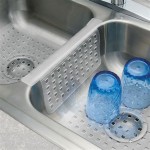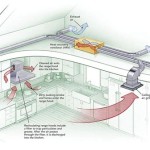A leaking kitchen faucet can be a real nuisance, and it can also waste a lot of water. Luckily, fixing a kitchen faucet leak is usually a relatively simple task that can save you money and time. In this article, we’ll discuss the different types of kitchen faucet leaks and the steps you can take to fix the problem.
Types of Kitchen Faucet Leaks
There are several types of kitchen faucet leaks, and each type requires a different approach to repair. Here are some common types of kitchen faucet leaks:
- A leaking base – This type of leak is usually caused by a worn gasket, an improperly installed washer, or a damaged O-ring.
- A leaking spout – This type of leak is often caused by a worn-out aerator or a cracked spout.
- A leaking handle – This type of leak is usually caused by a worn-out cartridge or an improperly tightened handle.
Steps to Fix a Kitchen Faucet Leak
Once you’ve identified the type of kitchen faucet leak, you can take the necessary steps to repair it. Here are some general steps for fixing a kitchen faucet leak:
- Turn off the water supply to the faucet. This will help prevent further damage to the faucet.
- Remove the handle of the faucet to access the internal parts. This will help you identify the source of the leak.
- Replace any worn-out parts, such as the gasket, washer, O-ring, aerator, or cartridge.
- Reassemble the faucet and turn on the water supply. Test the faucet to make sure the leak has been repaired.
Tips for Preventing Future Leaks
In addition to fixing the current leak, there are a few steps you can take to prevent future leaks from occurring. Here are some tips for preventing future leaks:
- Check the faucet regularly for signs of wear or damage, such as cracks, corrosion, or loose fittings.
- Regularly inspect the O-rings and washers for signs of wear or damage.
- Replace the aerator if it becomes clogged or worn-out.
- Check the handle regularly for signs of wear or damage, such as a loose fitting.
- Clean the faucet regularly to prevent buildup of dirt, grime, and debris.
By following these tips, you can help prevent future kitchen faucet leaks and keep your faucet in good working condition.















Related Posts








